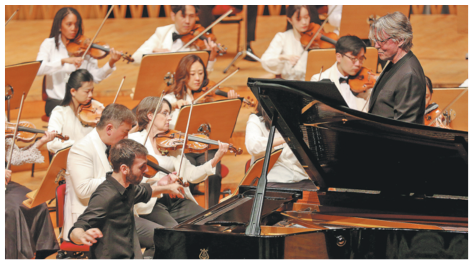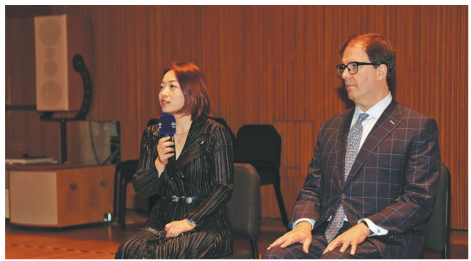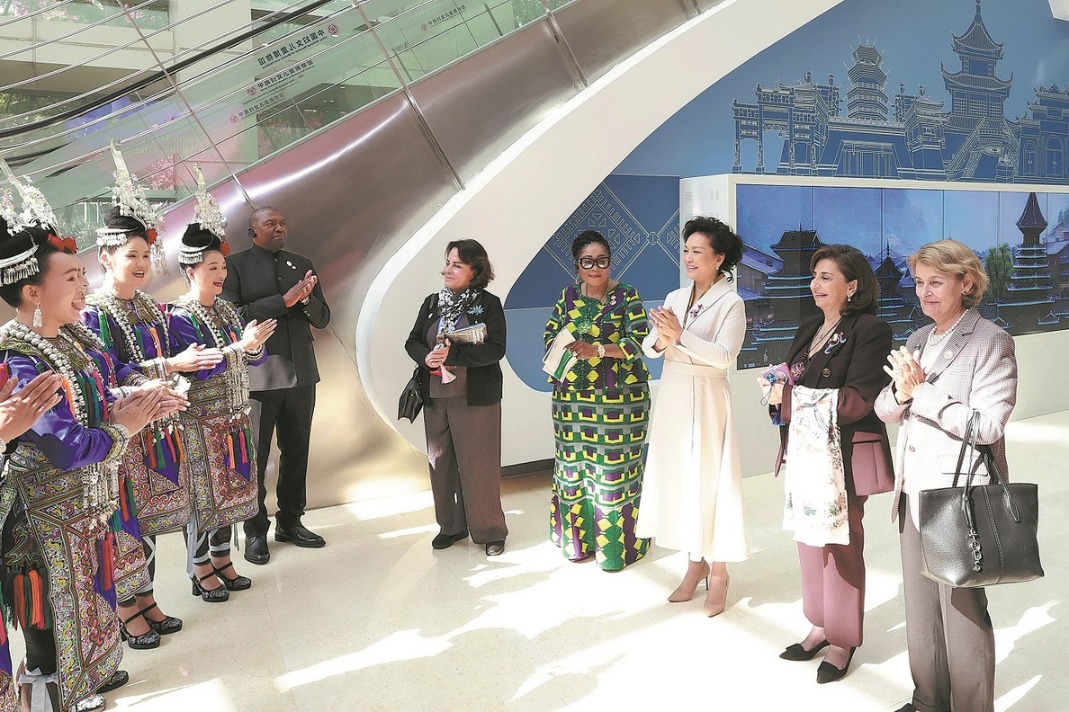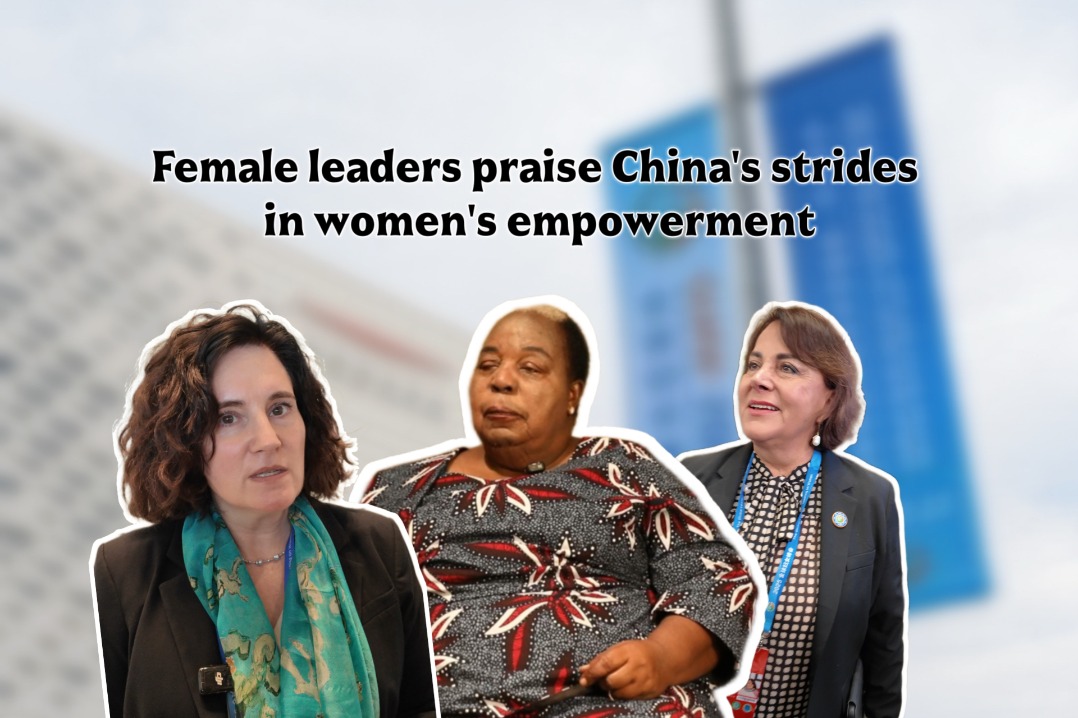A partnership that tunes into young talent
Orchestras show close ties at festival as both nourish music's future stars, Zhang Kun reports in Shanghai.

Music in the Summer Air, an annual festival hosted by the Shanghai Symphony Orchestra, opened on July 1 with a concert by the New York Philharmonic.
The American ensemble played under the baton of Finnish composer and conductor Esa-Pekka Salonen a series of French compositions such as Maurice Ravel's Mother Goose Suite, Claude Debussy's La Mer (The Sea), and Hector Berlioz's Symphonie Fantastique.
For the second full-orchestra concert on Wednesday, the New York Philharmonic and Salonen joined hands with French pianist Alexandre Kantorow, winner of the Gold Medal and Grand Prix at the 2019 Tchaikovsky Competition, to present Beethoven's Piano Concerto No 4 and Symphony No 3.
MISA, founded in 2010, is the first regular classical music festival in Shanghai aimed at attracting young audiences through a creative program fusing classical music with other art forms. This year, MISA began on July 1 and will continue until this Sunday, bringing 11 music ensembles, more than 300 overseas artists and 2,500 students who are taking the stage to present 29 concert hall performances and 24 online streaming concerts.
The New York Philharmonic and Shanghai Symphony Orchestra have had close ties since the founding of MISA. "We jointly commissioned new compositions, and cofounded the Shanghai Orchestra Academy," Zhou Ping, president of the Shanghai orchestra, said before the opening concert. "To me, this substantial and enduring partnership with the New York Philharmonic is a precious and rare thing. I think hardly any other orchestra in China can manage to maintain such a long-term relationship with an international colleague."
In 2015, the New York Philharmonic made its debut at MISA, introducing its Young People's Concerts series to Shanghai, as well as their ideas for art education. Its Young Composers Program was introduced to Shanghai in 2016. The program celebrates children's creativity by providing them with the tools to transform their musical ideas into finished compositions.
"Every time I come to China, I'm so impressed by the extent of participation in music from the many music students that we encounter," says Matias Tarnopolsky, the new president and CEO of the philharmonic. "Anything we can do to help encourage and broaden the experience of music for young people is something that we're very committed to."
Tarnopolsky was head of the Philadelphia Orchestra for almost seven years before taking office as president of the New York Philharmonic in January. The collaboration between the New York Philharmonic and the Shanghai Symphony Orchestra has "enriched both institutions through the exchange of artists and repertoire, both in Shanghai and in New York", he says.
The Shanghai and New York orchestras have long and storied histories, one founded in 1879 and the other in 1842, "both partly the result of patterns of global immigration, and both founded in major international cities", he says.
The collaboration of musicians of the two orchestras and the connections with the Shanghai Orchestra Academy make the musical bonds between them very real and personal, he says.
"I know the musicians are very happy to be back here," says Salonen. "I think they have had some wonderful experiences in Shanghai and in this concert hall.
"Both the long and recent history has proved that the connection between countries through music can be an incredibly positive force for good in the world," he says.
A problem with international touring is that, Salonen says, "quite often you have the feeling that you play one concert or two, and then go to the next place, … (but) you haven't really made any kind of contact with or impact on the cultural life of the city".
But having a long-term relationship, "everyone really has the feeling that this is more than just importing a couple of shows from abroad. I think this is the way of the future, that we see music as cultural diplomacy, and we see an orchestra as a source of information and education".
In the past years, Finland has produced some of the world's most prominent conductors. Salonen is one of them. He attributed this to an effective art educational mechanism in his home country.
Finland is a small country, he says. The entire population is 5.5 million, about a quarter of Shanghai. "If a nation that small wants to maintain or create a musical life of high standards, they have to take care of their talents and make sure that the talents can be properly educated, trained, and have opportunities to grow."
In Finland, there is an accessible free communal music school system where kids learn to play, Salonen says. "They can borrow instruments if their parents don't have enough money to buy them. … It is easy to get a good musical education for the most talented youth."
Young musicians will also find role models in successful conductors from Finland, male and female, who show them "it is like a dream that can become reality", and they are ready to offer their helping hands to a younger generation of musicians, he says. Finnish orchestras are also very supportive of young conductors.
Young musicians, whether you are an instrumentalist, singer, composer or conductor, "it's like we are all together. Conducting doesn't become this weird thing where you have to be 'semi-godlike'", he says. "You are just one of them. We need a conductor because somebody has to conduct. I think that's pretty healthy."





Today's Top News
- Manila's delusion of external support
- Major Myanmar fraud cases enter prosecution
- Xi congratulates Patrick Herminie on election as Seychelles' president
- Xi's article on promoting implementation of global initiatives to be published
- China prosecutes major northern Myanmar criminal gangs
- US tariffs a threat to African economies






























